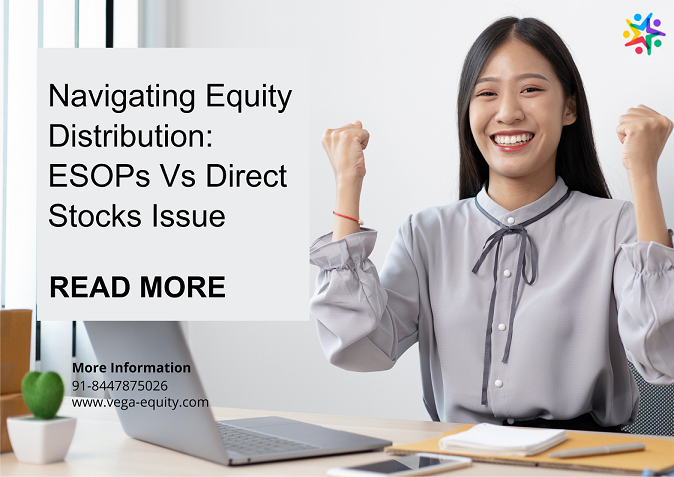In the realm of modern businesses, the concept of employee ownership stands as a beacon of alignment and empowerment of interests. Two vital mechanisms at the heart of this are Employee Stock Ownership Plans (ESOPs) and direct stock issuances. These approaches redefine the conventional employer-employee relationship by providing pathways for employees to work for an organization and become co-owners, sharing in its fortunes and successes.
Imagine an employee deeply connected to the organization’s fate, not just through dedication and hard work but via a tangible stake in its growth. ESOPs and direct issuances represent two distinct yet robust strategies that make this vision a reality. Let’s dive into the intricacies of these models, deciphering their mechanisms, impact, and the profound implications they hold for both organizations and their invaluable workforce.
How does an ESOP work?
An ESOP is a type of employee incentive scheme. It provides ownership to contractors and employees, subject to vesting requirements and ongoing rules. Simply put, an ESOP works as follows:
- The contractor or employee receives options (or rights),
- To receive ordinary stocks,
- As long as they comply with the ESOP (Plan Rules) rules.
ESOPs are the most common form of employee incentivization for small and start-up businesses.
Major Difference between an ESOP and a Direct Issue
An ESOP & a direct issue of shares are two different ways employees can acquire ownership in a company, but they operate in distinct ways.
| Basis | ESOP (Employee Stock Ownership Plan) | Direct Issue of Shares |
| Structure | An ESOP is a retirement plan that provides employees to become partial company owners by receiving company stock shares as part of their benefits. | A direct issue of shares involves the company issuing new shares directly to employees, allowing them to purchase or receive ownership stakes in the company. |
| Funding | Companies create an ESOP by setting up a trust and contributing shares of the company to that trust. The trust then holds the shares on behalf of the people participating in the ESOP. | The company issues new shares and sells them directly to employees. This can be done through various means, such as stock purchase plans, options, or direct grants. |
| Employee Involvement | Employees typically don’t directly purchase shares but receive them as part of their compensation or benefits package. | Employees are directly involved in the purchase or receipt of these shares, often through payroll deductions, stock option plans, or outright grants. |
| Purpose | ESOPs are often used for corporate succession planning, incentivizing and retaining employees, and aligning employee interests with company performance. | Direct issuance of shares can also be used to incentivize employees, align their interests with the company’s success, and retain top talent. |
Therefore, an ESOP is a specific type of employee benefit plan that involves a trust holding firm shares for employees’ retirement benefits. In contrast, a direct issue of shares involves the direct sale or issuance of shares to employees as a part of their compensation or benefits package. Both methods aim to include employees in the company’s ownership but differ in their structures and mechanisms for achieving this goal.
Why would a company do an ESOP instead of directly issuing stocks?

Companies might choose an Employee Stock Ownership Plan (ESOP) over directly issuing stocks for a few reasons:
1. Employee Incentives: ESOPs are designed to incentivize and reward employees. By providing them with ownership through ESOPs, companies aim to align the interests of the employees with those of the company. This can enhance motivation and improve employee retention.
2. Tax Benefits: ESOPs can offer the company and participating employees tax advantages. Contributions to ESOPs are often tax-deductible for the company, and employees may receive certain tax benefits when they eventually sell their ESOP shares.
3. Gradual Ownership: ESOPs allow for a gradual transfer of ownership to employees over time. This can be beneficial for succession planning or when the company wants to maintain control while still offering ownership to employees.
4. Employee Buy-In: Offering shares directly to employees might require them to purchase the stocks, which might only be feasible for some. ESOPs typically provide shares as part of the employee compensation package, often without any direct cost to the employees.
Read Also:- Decoding ESOP Buyback: Your Guide to Maximizing Returns
5. Regulatory Considerations: Regulatory or legal considerations might make setting up an ESOP a more suitable option for the company than directly issuing stocks.
6. Cultural Impact: ESOPs can foster a sense of ownership, belonging, and commitment among employees, which could positively impact the company culture.
While both methods involve granting ownership to employees, an ESOP is a specialized and structured way to offer various benefits and flexibility that direct stock issuance might not provide.
Final Thoughts
ESOPs and direct stock issuances offer a roadmap for employees to become shareholders and align their interests with the organization. ESOPs, through their structured retirement plans, create a gradual ownership accumulation, while direct issuances grant immediate ownership with more flexibility for the company. Understanding the nuances of these models is significant for firms aiming to foster employee ownership, drive engagement, and shape their organizational culture. Whether through ESOPs or direct issuance, the ultimate goal remains the same – to create a workforce that feels invested in the success and growth of the organization.
In selecting between these models, organizations must weigh the trade-offs between regulatory compliance, long-term engagement, immediate ownership, tax implications, and their organizational objectives to create an ownership structure that best suits their unique needs and workforce aspirations. Contact us at Vega Equity to learn more about the platform.


